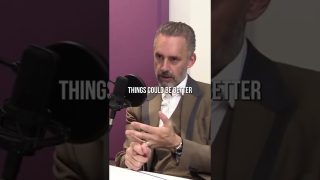What is stagflation? US economy worries are growing
And in the last half-century, allUS recessions have involved steadily increasing consumer price levels. A leading factor for it was the Arab oil embargo that began in October 1973, soon followed by the Iranian Revolution in 1979. These 2 events created an oil shortage in the US, causing the cost of crude oil to quadruple, stay elevated, and then triple.
GDP declined by 0.3% in the first quarter of 2025, the Bureau of Economic Analysis estimates, the first time the US economy contracted since 2022. The U.S. economy and the world economy in the 1970s were very different from what they are now. There was a big process of globalization in the intervening decades that made the economy more interdependent with the rest of the world. Keynes detailed the relationship between German government deficits and inflation. Santangelo said there are things Americans can do to prepare for potential economic turmoil.
However, the occurrence of this extreme inflation in the latter half of the 20th century challenged this perspective. Powell signaled Wednesday the Fed will assess whether high inflation or a slow economy poses a greater risk for the U.S. It has yet to announce if, when, or by how much, it will adjust interest rates. Certain sections of this blog may contain forward-looking statements that are based on our reasonable expectations, estimates, projections and assumptions.
This is also called “sticky inflation,” and we see it hover around essentials like food and fuel. Please bear with us as we address this and restore your personalized lists. At Ameriprise, the financial advice we give each of our clients is personalized, based on your goals and no one else’s. Prior to Trump’s tariffs, the firm wasn’t anticipating a recession at all this year, Sløk said.
(In other words, $50 won’t buy as much as it used to.) Unless you’re receiving regular raises to counteract inflation, your take-home pay may be not be able to cover as much. If unemployment is high, employers aren’t likely to lift wages to compete for easy-to-find talent. It was high single-digits inflation and very slow growth,” Powell said last May, referring to stagflation in the 1970s. That’s an uptick from the 4.3% unemployment rate and the 2.5% inflation rate officials projected in December. It’s also a jump from the current 4.1% unemployment rate, per the February jobs report, and 2.5% PCE inflation in January. According to officials’ latest median estimates, the US unemployment rate may hit 4.4% by year’s end.
Supply Shocks
- While Haworth and Bond agree that concerns about stagflation risks are warranted, current dynamics don’t yet constitute such a phenomenon.
- According to the classic theory, when inflation is high, unemployment is supposed to be low, and vice versa.
- Inflation, as measured by the Personal Consumption Expenditures price index, could rise to 2.7%.
That reflects economic growth being slashed by more than half compared with its peak in the third quarter of 2024, when the GDP expanded 3.1% year over year. You’re probably familiar with inflation, but how much do you know about stagflation? It’s a term from the past, but it could seriously impact your future, from job prospects to your family grocery budget.
Mastercard Is One of the Largest Financial Companies by Market Cap. But Is It a Buy?
While it’s unlikely that the U.S. economy is headed for another bout of stagflation, it’s important to contextualize what’s happening with the prominent episode of stagflation in the 1970s. If we imagine the Phillips curve as a seesaw, in the past, when one side (unemployment) went down a lot, the other side (inflation) would reliably go up. Even when unemployment has dropped quite a bit, inflation hasn’t gone up as much as experts expected. It’s like one side of the seesaw can go down quite low without the other side rising very high. The Standard & Poor’s 500 (“S&P 500”) Index is a market-capitalization-weighted index of the 500 largest U.S. publicly traded companies by market value.
Demand-side Reforms
It serves as a crucial economic indicator reflecting the well-being of the labour market. Elevated unemployment rates can have substantial social and economic ramifications, including reduced consumer spending, diminished tax revenues, and augmented government expenditure on unemployment benefits. Like a recession, stagflation is a convergence of economic events that leads to a poor outcome. One driver of stagflation is poor economic policies that allow these converging factors to meet or increase to a level that they can’t be overcome. In fact, the theories that said stagflation was impossible prior to the 1970s contributed to this cause.
Alternative views
The information herein is general and educational in nature and should not be considered legal or tax advice. Tax laws and regulations are complex and subject to change, which can materially impact investment results. Fidelity cannot guarantee that the information herein is accurate, complete, or timely. Fidelity makes no forex trading reviews warranties with regard to such information or results obtained by its use, and disclaims any liability arising out of your use of, or any tax position taken in reliance on, such information.
The Resale Economy: From Fast Fashion to Circular Markets
The severity of stagflation can be measured by the “misery index,” a straightforward sum of the inflation and unemployment rates. As the misery index rises, Americans face the painful combination of fewer available jobs and declining purchasing power. In inflationary times, bonds may struggle as rising interest rates decrease their value. Yet, during stagflation, high-quality bonds could provide a safe haven amid economic uncertainty.
The crucial factor in averting stagflation lies in the proactive approach of economic policymakers. Stagflation, a rare economic phenomenon marked by stagnant growth coupled with high inflation, has significant implications across various sectors. The word “stagflation” is formed by blending “stagnation” and “inflation.” It was initially employed during the early 1970s to depict the economic state prevailing in the United States and other advanced economies during that period. While stagflation includes rising inflation, it’s not the same thing as inflation. Thus, preparing for stagflation looks a bit different from preparing for inflation. The 1990s and early 2000s witnessed Japan facing a long period of stagflation.
A commodity price spike high enough to trigger stagflation could come from the demand side instead of the supply side. In that case, the government, people, and corporations would be willing to pay high prices for a given resource. That could potentially cause that commodity price to continue rising without the economy growing, leading to stagflation.
- Stagflation denotes a situation characterized by stagnant economic growth, high inflation, and unemployment.
- In turn, manufacturing became more expensive, raising prices across the country and slowing economic growth.
- When the value of the dollar falls, it can help drive other forces that lead to stagflation.
- Simultaneously, these higher costs can lead to cuts in business investment and consumer spending, potentially slowing economic growth and leading to layoffs—the very definition of stagflation.
In addition to the World Bank, other major institutions—like Goldman Sachs and BlackRock—have also warned about stagflation risks. And former Fed Chair Ben Bernanke said in May 2022 that the U.S. could be in for a period of stagflation. Some assets become more attractive during stagflation, including real assets, inflation-linked products, and stocks of companies with pricing power. A slowing GDP (gross domestic product) growth — when the economy’s output starts to decline or contract — is a big red flag warning of stagflation. GDP decreased at an annual rate of 0.3% in the first quarter of 2025 (January, February and March), according to the advance estimate released by the U.S.
Higher tariffs can have the same effect, especially when put in place very quickly. When companies face higher input costs, they typically pass that on to consumers through higher prices (how much depends on the sector and is a matter of debate) while also reducing production, leading to layoffs. Inflation typically occurs during periods of economic growth, where increased demand drives up prices.





